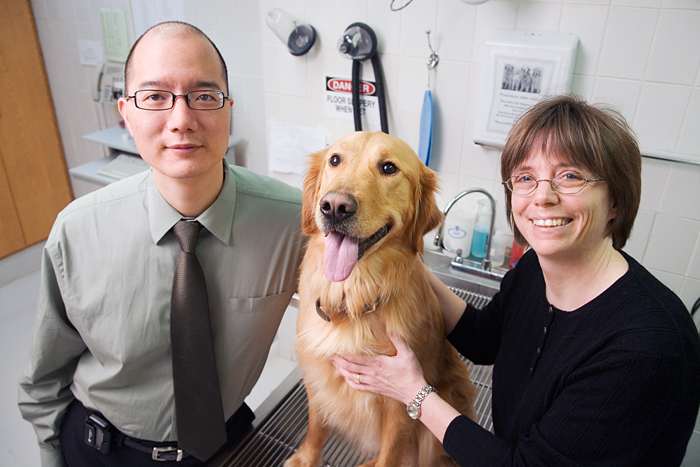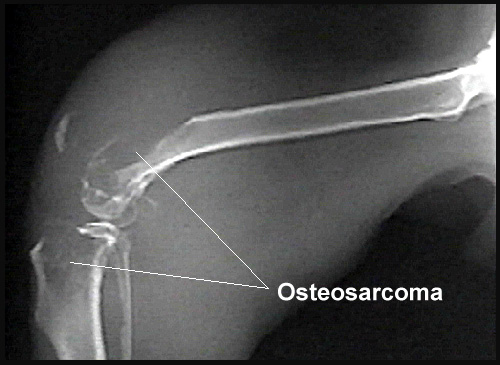Bone cancer in dogs is the most common cancer in dogs or canines. It is important to first identify the primary symptoms and signs of Bone Cancer in dogs which is the first step to know that your dog may require medical attention from your local veterinarian. Diseases and symptoms do vary from dog to dog, so it is always best to consult your veterinarian as soon as any of the symptoms is witnessed.
Out of any animals, usually in dogs as well as any household pet, it is the upper or the lower long bones of the front legs that get affected. Sometimes the jaws and facial bones too get affected. Initial symptom is limpness and subsequent swelling in the bones and joints. Over time, the areas where the bone tumors are located will become swollen, hard and extremely painful.
Symptoms of bone cancer in dogs are lameness which is progressive and of varying severity, pain and swelling around the affected area of the leg; most often evident in one leg rather than several; broken bones called pathologic fractures at the tumor site, caused by bone weakness from the cancer; usually no history of physical injury to the area, the top jaw is swelling, or has puffed out already – This is termed Maxilla – And this is normally a painful experience for the dog. Another symptom can be pain in the dog’s spinal area, causing pain, also around the rib cage area. Also chewing or biting can be sore. This is known as dysphagia. A lack of appetite, Respiratory abnormalities (When the dog finds it hard to breathe, or dyspnea) which is usually onset by metastasis, meaning the fast spread of the cancer to the lung tissue from the bones which is potentially caused also by osteosarcoma in the dog’s rib cage.

Bone Cancer In Dogs – The Vet Explains
A dog’s height and weight add to the probability of developing bone cancer than its breed. Larger animals usually develop osteosarcoma in only one of their legs. Smaller dogs can develop osteosarcoma in their legs, but they are equally likely to have this form of bone cancer show up in other parts of their skeleton. The specific reason Osteosarcoma develops in dogs aren’t known to any person or scientist but ionizing radiation or inherited bone defects passed on to dogs are suspected to be some contributing factors. It has also been associated with chronic osteomyelitis and in fractures in which no internal repair was used. Bone Cancer In Dogs is also seen due to bone infarcts. In dogs, injected with plutonium during experimental studies, the occurrence has been found to be rampant. Genetic factors are also believed to induce the development of tumors. Dogs with OSA have been found to have aberrations of the p53 tumor suppressor gene.
Treatment for bone cancer and Osteosarcoma in dogs involves steps depending on the gravity of the disease. The first step is to take lateral and craniocaudal radiographic projections. A bone biopsy can actually be done by any well reputed vet and this is usually does as an incision or trephine biopsy. The biggest benefit of having an open method is that big samples are able to be obtained making histopathological diagnosis much easier and more precise to determin. Amputation of the affected limb is the standard local treatment for canine appendicular osteosarcoma. A surgery called limb sparing describes an action which substitutes a diseased bone by the use of a metal implant to assist the dog’s bone integrity. This involves a bone graft from another person (allograft), or a combination of bone graft and metal implant (prosthetic composite). It is known that almost any dog can cope well, as they are most resilient, when they have had to endure an amputation, but in circumstances such as very bad neurological diseases and diseases involving orthopedics, it is most preferable for vets to spare the dog’s limb from amputation.






